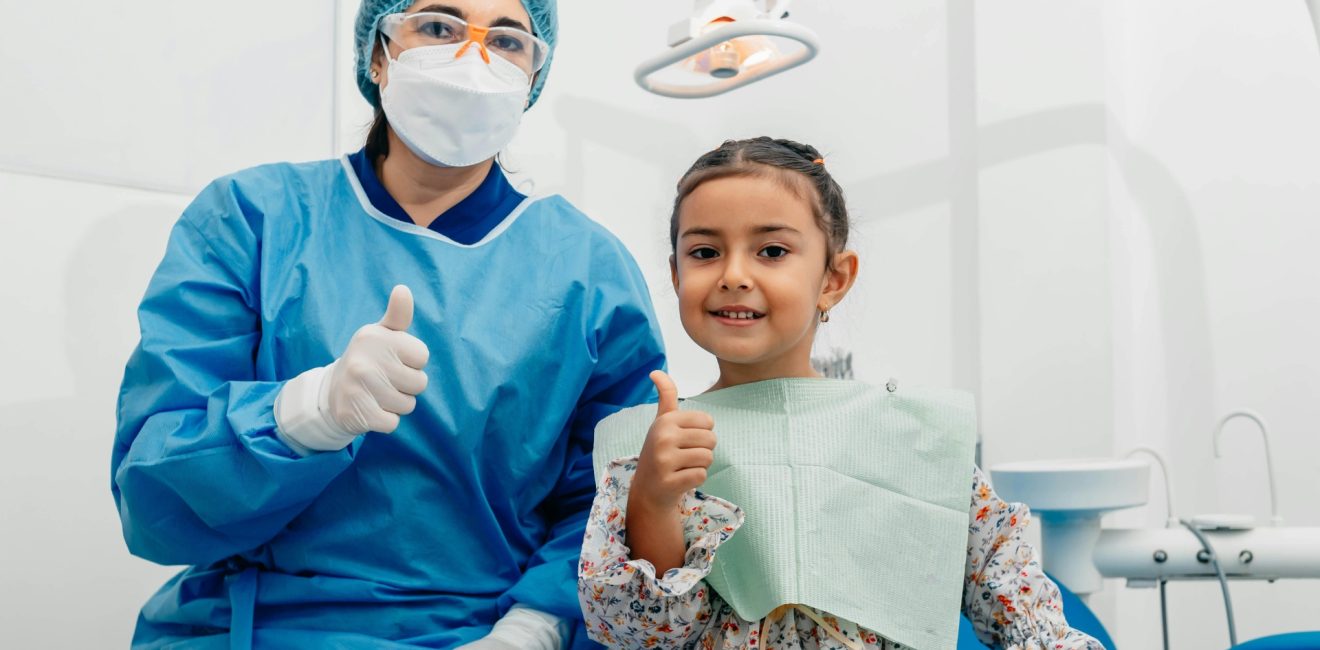Learn how to prepare your child for their first dental visit with expert tips, practical strategies, and guidance from pediatric dental professionals. Make their first appointment stress-free and positive.
Your child’s first dental visit is a significant milestone that sets the tone for their lifelong relationship with oral health care. While it’s natural for both parents and children to feel nervous about this new experience, proper preparation can transform what might seem scary into an exciting adventure. By taking the right steps before the appointment, you can help your child feel confident, comfortable, and even excited about visiting the dentist.
Key Takeaways
- Schedule your child’s first dental visit by age 1 or within 6 months of their first tooth appearing
- Start preparing weeks in advance through books, role-play, and positive discussions
- Choose a pediatric dentist who specializes in working with children
- Bring comfort items and arrive early to allow time for familiarization
- Use positive language and avoid scary words when discussing the visit
- Consider scheduling a “meet and greet” visit before the actual examination
When to Schedule Your Child’s First Dental Visit
The American Academy of Pediatric Dentistry recommends scheduling your child’s first dental appointment by their first birthday or within six months after their first tooth appears. This early timing might surprise some parents, but it serves several important purposes beyond just examining tiny teeth.
Early dental visits help establish a “dental home” where your child can receive consistent, comprehensive care as they grow. These initial appointments focus primarily on education, prevention, and building positive associations with dental care. The dentist will examine your child’s mouth, discuss proper oral hygiene techniques, and assess their risk factors for future dental problems.
Starting dental visits early also allows the dentist to monitor your child’s oral development and catch any potential issues before they become serious problems. Additionally, these early visits help normalize the dental experience, making future appointments much easier for both you and your child.
Choosing the Right Pediatric Dentist
Selecting the right dental professional is crucial for creating a positive first experience. Pediatric dentists receive specialized training in child psychology, behavior management, and the unique dental needs of growing children. They understand how to communicate with children at different developmental stages and create environments that feel welcoming rather than intimidating.
When researching potential dentists, look for offices that cater specifically to children. These practices typically feature colorful, kid-friendly decorations, smaller dental chairs, and staff trained in working with young patients. Many pediatric dental offices also offer amenities like toys, books, and entertainment systems to help children feel more comfortable.
Consider visiting potential dental offices beforehand to get a feel for the environment and meet the staff. A quality pediatric dental practice, such as those found at comprehensive clinics like PureSmile, will welcome these preliminary visits and understand their importance in building trust with both children and parents.
Questions to Ask When Choosing a Pediatric Dentist
- What is your experience working with children?
- How do you handle anxious or fearful children?
- What comfort measures do you offer?
- Can parents stay with their child during the appointment?
- Do you offer sedation options if needed?
- What emergency services do you provide?
Preparing Your Child Weeks Before the Visit
Preparation should begin several weeks before the actual appointment. Start by introducing the concept of dental care through age-appropriate books and videos about visiting the dentist. Many children’s books feature beloved characters having positive dental experiences, which can help normalize the idea and reduce anxiety.
Incorporate dental themes into your child’s play time. Use toy dental kits to examine stuffed animals or dolls, letting your child take turns being both the dentist and the patient. This role-playing helps familiarize them with the tools and procedures they might encounter during their visit.
Discuss the upcoming visit in positive terms, focusing on how the dentist will help keep their teeth strong and healthy. Avoid using words that might create fear, such as “pain,” “hurt,” “needle,” or “drill.” Instead, use friendly terminology like “tooth counter,” “tooth cleaner,” or “smile helper.”
What to Expect During the First Visit
Understanding what typically happens during a first dental visit can help you prepare your child and set appropriate expectations. Most initial appointments for very young children are brief and focus on building comfort rather than extensive treatment.
The dental team will likely start by greeting your child warmly and perhaps giving them a tour of the office. They might show your child the dental chair, let them touch some of the instruments, and explain what each tool does in simple, non-threatening terms.
During the examination, the dentist will gently look inside your child’s mouth, count their teeth, and check for any signs of decay or developmental issues. They may also demonstrate proper brushing techniques and discuss nutrition as it relates to oral health.
Typical First Visit Activities
- Friendly introduction and office tour
- Gentle oral examination
- Teeth counting and cleaning (if tolerated)
- Brushing demonstration
- Fluoride treatment (if appropriate)
- Discussion of oral health habits
- Questions and answers for parents
Strategies for Reducing Dental Anxiety
Dental anxiety is common among children, but there are many effective strategies to help minimize fear and create positive associations with dental care. Your attitude as a parent plays a crucial role in shaping your child’s perception of dental visits.
Maintain a calm, positive demeanor when discussing the dental visit. Children are incredibly perceptive and will pick up on your anxiety or concerns. If you have your own dental fears, try to work through them separately rather than projecting them onto your child.
Consider scheduling the appointment at a time when your child is typically well-rested and in a good mood. Avoid scheduling during nap times or when your child is likely to be hungry or cranky. Morning appointments often work well for young children who have more energy and patience earlier in the day.
Bring comfort items that help your child feel secure, such as a favorite stuffed animal, blanket, or toy. Most pediatric dentists welcome these comfort objects and understand their importance in helping children feel safe and secure.
Creating Positive Associations
Building positive associations with dental care extends beyond the actual appointment. Start incorporating oral health into your daily routine in fun, engaging ways that make teeth care feel special rather than burdensome.
Let your child choose their own special toothbrush and toothpaste (with your guidance on appropriate fluoride content). Many children enjoy brushes featuring their favorite characters or fun colors. Electric toothbrushes with timers can also make brushing more enjoyable and effective.
Create a reward system for good oral hygiene habits, but avoid using sugary treats as rewards. Instead, consider stickers, extra story time, or special activities. Some families create “tooth fairy” traditions even before teeth start falling out, celebrating healthy teeth and good dental habits.
Make brushing and flossing a family activity where everyone participates together. Children learn by example, and seeing parents take care of their teeth reinforces the importance of oral hygiene.
What to Bring to the Appointment
Being well-prepared for the appointment can help everything go more smoothly and reduce stress for both you and your child. Create a checklist of important items to bring along to ensure you don’t forget anything essential.
Bring any relevant medical history, including information about medications, allergies, or previous medical procedures. If your child has special medical needs or takes medications, make sure the dental team is aware of these details beforehand.
Pack comfort items that help your child feel secure, along with any special dietary restrictions or feeding schedules that might affect the appointment timing. Some dental offices provide small toys or prizes after visits, but bringing a backup comfort item is always wise.
Appointment Day Checklist
- Medical history and insurance information
- List of current medications
- Comfort items (stuffed animal, blanket, favorite toy)
- Snacks for after the appointment (avoid sugary options)
- Camera to capture this milestone moment
- Questions you want to ask the dentist
- Positive attitude and patience
Handling Challenges During the Visit
Even with excellent preparation, some children may still feel anxious or uncooperative during their first dental visit. This is completely normal, and experienced pediatric dentists have many strategies for handling these situations with patience and understanding.
If your child becomes upset or refuses to cooperate, don’t feel embarrassed or frustrated. Pediatric dental professionals are accustomed to working with anxious children and have techniques to help them feel more comfortable. Sometimes, simply allowing a child to watch another patient or sibling can help reduce their fears.
Be prepared for the possibility that the first visit might not include a complete examination. Some children need multiple visits to become comfortable with the dental environment, and that’s perfectly acceptable. The goal is to build positive associations, not to force cooperation.
Building Long-Term Dental Health Habits
Your child’s first dental visit is just the beginning of a lifelong journey toward good oral health. Use this experience as a foundation for building healthy habits and positive attitudes toward dental care.
Continue regular dental visits every six months, or as recommended by your child’s dentist. Consistency helps normalize dental care and allows the dental team to monitor your child’s development and catch any issues early.
Maintain good oral hygiene habits at home, making brushing and flossing enjoyable rather than a chore. As your child grows, gradually transfer responsibility for their oral care to them while continuing to supervise and assist as needed.
Frequently Asked Questions
Q: What if my child cries during the first dental visit? A: Crying is completely normal and expected for many children during their first dental visit. Experienced pediatric dentists know how to handle tears with patience and understanding. They may suggest shorter visits or different approaches until your child becomes more comfortable.
Q: Should I stay with my child during the appointment? A: Most pediatric dentists welcome parents to stay with young children during their first few visits. As children become more comfortable and independent, some dentists may suggest that parents wait in the reception area, but this varies by practice and individual child needs.
Q: What if my child has special needs or medical conditions? A: Inform the dental office about any special needs or medical conditions when scheduling the appointment. Pediatric dentists are trained to work with children who have various medical conditions and can adapt their approach accordingly.
Q: How long should the first dental visit take? A: First dental visits for very young children are typically brief, lasting 15-30 minutes. The focus is on building comfort and familiarity rather than extensive treatment, so the appointment length depends on your child’s comfort level and cooperation.
Q: What if no problems are found during the first visit? A: Finding no problems is excellent news! The first visit is primarily preventive and educational. Even if your child’s teeth look perfect, the visit helps establish good habits, provides valuable education, and creates a baseline for future appointments.
Preparing your child for their first dental visit is an investment in their long-term oral health and well-being. By taking the time to choose the right pediatric dentist, prepare your child appropriately, and create positive associations with dental care, you’re setting the foundation for a lifetime of healthy smiles.
Remember that every child is different, and what works for one may not work for another. Be patient with the process and don’t hesitate to communicate with your dental team about your child’s specific needs and concerns. Professional pediatric dental practices understand the importance of making first visits positive experiences and will work with you to ensure your child feels comfortable and safe.
The goal of the first dental visit isn’t perfection – it’s progress. Whether your child sits perfectly still for a complete examination or simply manages to walk through the door and meet the dental team, each step forward is a success worth celebrating. With proper preparation, patience, and the right dental team, your child’s first dental visit can be the beginning of a positive, lifelong relationship with oral health care.
For comprehensive pediatric dental services and experienced professionals who specialize in making children comfortable, consider consulting with established dental practices that prioritize child-friendly care and family-centered treatment approaches. The right dental team can make all the difference in creating positive first impressions that last a lifetime.







